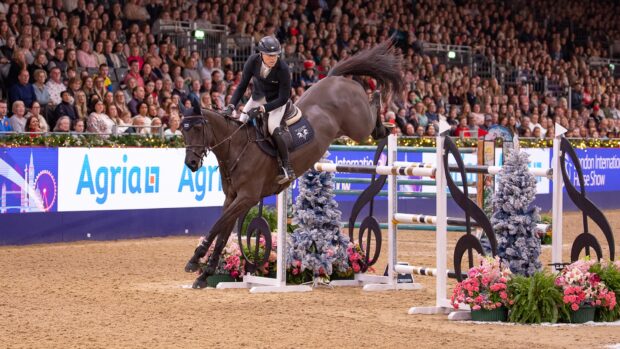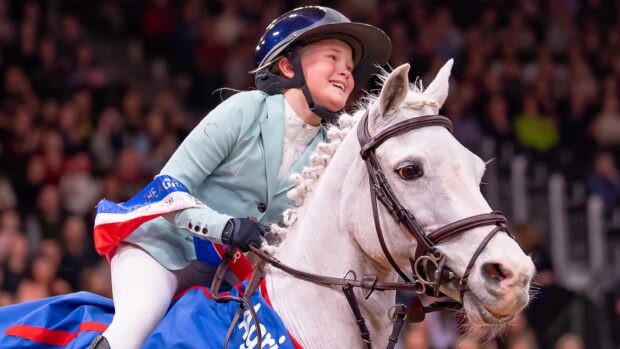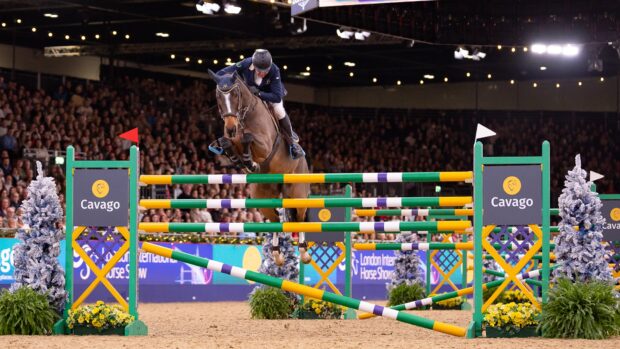Planned changes to whip rules for horse racing in Britain have been amended following concerns from jockeys.
Jockeys will now be allowed to continue using the whip in the forehand position and the number of times a jockey is permitted to use a whip in a race will be reduced. Penalties will also be upped “above and beyond previous increases published in November”, under the British Horseracing Authority’s (BHA) revisions.
The remainder of the whip rule changes remain the same and the “soft launch” in jump racing will continue as planned on Monday (9 January), coming fully into force on 6 February. On the Flat, the soft launch starts on 27 February, with full implementation on 27 March.
The main focus of the new rules is for a more considered and judicious use of the whip for encouragement, and improved perception of its use.
Before Christmas, the BHA and chair of the whip consultation steering group reopened discussions about the whip to “address concerns” as new points came to light.
“This change follows additional concerns being raised by jockeys in the last few weeks, including some information which was not aired during the consultation or technical discussion phase,” said the BHA statement today (Wednesday, 4 January), adding that the change follows dialogue between the BHA, Professional Jockeys Association (PJA) and jockeys.
“This included the feedback that some jockeys who have suffered shoulder or collarbone injuries may find use of the whip solely in the backhand more challenging”
It added: “These changes do not, in the view of the BHA board, reflect a dilution of the package of rule changes, but instead a method of achieving the same outcomes through a different approach.”
What are the changes to the racing whip rules?
Changes to the British racing whip rules were confirmed in November and today’s announcement concerns amendments to those.
These fresh amendments remove the change in November which stated that the whip may only be used in the backhand position. It has been replaced by an amendment regarding the number of times a whip may be used in a race. The thresholds will now be reduced to a maximum of six times in a Flat race and seven times in a jump race. This is down from seven and eight times respectively.
Penalties for use above the permitted level, and misuse offences, such as using the whip above shoulder height, without giving the horse time to respond or in the incorrect place have, in most instances, been significantly increased from those agreed in November. For example, using the whip with excessive force will carry a minimum five-day ban (doubled in Class 1 and 2 races), up from the three-day minimum outlined previously.
The full package of measures announced in November included introducing disqualification as a penalty for the most serious breaches, plus a new whip referral committee responsible for “evaluation of all rides and any necessary sanction or action”.
David Jones, regulatory independent non-executive director for the BHA, and chair of the whip consultation steering group, said an “extremely thorough” consultation was carried out in 2021 and 2022. He added that this was followed by “extensive technical discussion” after the recommendations were published in July.
“Efforts were taken to listen to the views of jockeys from both codes, over many hours. This consultation has arguably been the most thorough undertaken by the BHA in relation to any specific regulatory reform,” said Mr Jones.
“To ensure that this process was suitably rigorous we pushed back the planned autumn implementation date for new rules.
“However, we are committed to listening to our participants, and when further views and information come to light very late in the day, and following the conclusion of that process, we were duty bound to consider it, and make representations to the BHA board accordingly.”
BHA chairman Joe Saumarez Smith added that the BHA previously endorsed the “clear set of objectives set out by the whip consultation steering group in the summer”.
“It became clear through the views raised in the last few weeks […] that the backhand-only rule could potentially have caused difficulties for some riders. However, in considering making changes it was essential that the BHA board were not doing anything to dilute the outcome of the whip report,” he said.
“The BHA board has therefore agreed these further changes, which resolve the issues with the backhand-only rule, but retain the objective of making whip use visibly more palatable to the public, therefore helping to safeguard engagement with the sport amongst our fans present and future.”
Mr Saumarez Smith said the BHA “now hopes and expects to see these rules being respected” and “visible change in whip use”.
He added the board also expressed that the sport should try to avoid future situations where pertinent information comes to light after extensive consultations have ended – a point that has been made to the PJA.
“We are pleased that the PJA has agreed to review its consultation processes in the light of this,” he said.
H&H explainer… what is the racing whip and why are the rules changing?
Whips used in racing are foam-padded and energy absorbing, meaning they are cushioned upon impact.
There is only one accredited supplier in British racing, to ensure whips conform to required standards, and whips are checked by the clerk of the scales to ensure they are in good condition before they are used in a race.
The whip in racing is used for safety, correction and encouragement.
Keeping horses straight when travelling at speed is important when it comes to the safety of all horses and riders in a race, and the whip is one of the “tools” in a jockeys kit to do that – alongside their arms, legs, balance and judgement. “Encouragement” means using the whip as an aid to activate and focus the horse. Use of the whip to coerce is not permitted.
Horses are checked by racecourse vets on returning from a race to ensure they have not been marked by the whip.
Rules on using the whip in British racing have been in place for a long time. Mandatory cushioned whips were introduced in jump racing in Britain in 2004, and on the Flat in 2007. These were updated in 2009.
The last major review of whip rules, prior to the 2022 changes, was in 2011. In 2020, the British racing industry’s independent Horse Welfare Board recommended a consultation and review of penalties on whip use. The consultation started in 2021, details of the changes were released in July 2022 and timescales published in November 2022. Tweaks were made to these recommendations in early 2023, ahead of the soft launch in jump racing on 9 January 2023.
For more information on whip use in British racing, visit the British Horseracing Authority’s page explaining its use and regulation in more detail and view the video below of jockey Tom Scudamore and vet Sally Taylor
You might also be interested in:

Subscribe to Horse & Hound magazine today – and enjoy unlimited website access all year round

New whip rules to roll out in early 2023

Major whip rule changes for eventing in Britain next season
Horse & Hound magazine, out every Thursday, is packed with all the latest news and reports, as well as interviews, specials, nostalgia, vet and training advice. Find how you can enjoy the magazine delivered to your door every week, plus options to upgrade your subscription to access our online service that brings you breaking news and reports as well as other benefits.




